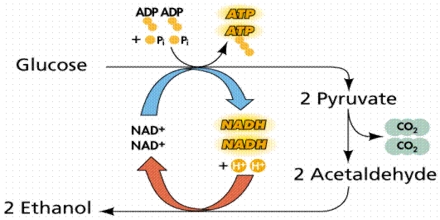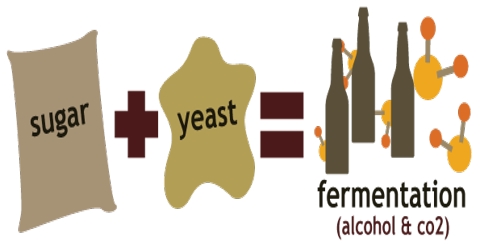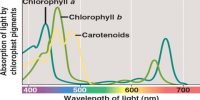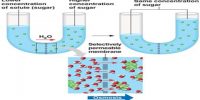Fermentation and anaerobic respiration are two types of cellular respiration mechanisms that are used to produce ATP for the functioning of the cell. Both fermentation and anaerobic respiration occur in the absence of oxygen.
Fermentation: The process by which glucose is completely oxidized in the absence of oxygen, to form alcohol or lactic acid, and a small amount of energy is said to be fermentation. This process is followed in the field of industries, such as- bread factories, wine industries, etc. The carbohydrate gets broken down, but instead of making pyruvate, the final product is a different molecule depending on the type of fermentation. Since fermentation does not use the electron transport chain, it is not considered a type of respiration.
Anaerobic respiration occurs in some yeasts and bacteria and in a muscle when exercise is strenuous and there is not enough oxygen. The first step in is glycolysis, the second is the citric acid cycle and the third is the electron transport system. The process of glycolysis will make a net gain of 2 ATP. If there is a sufficient supply of oxygen, or sometimes other types of electron acceptors, the pyruvate then goes on to the next part of aerobic respiration.
Differences between anaerobic respiration and fermentation
Anaerobic Respiration – It refers to a type of cellular respiration that occurs in the absence of oxygen.
- It occurs within the cells.
- In this case, different enzymes formed within the cells take part directly in the reaction
- In this case, the internal glucose of the cells is used.
- It uses molecules other than oxygen to complete the metabolic cycle.
- It exists mostly in bacteria, including the bacteria in many animal intestinal tracts.
- It occurs in the absence of oxygen. Carbon dioxide is not released.
- It uses either endogenous or exogenous non-oxygen compounds as terminal electron acceptors.
- In anaerobic respiration, glycolysis follows the citric acid cycle and electron transport chain.
- The total production of ATP in anaerobic respiration is 38.
- The enzymes extracted from the cells cannot process the anaerobic respiration in an extracellular medium.
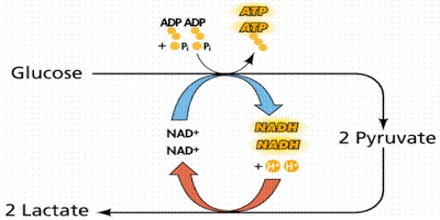
Fermentation – It refers to any group of chemical reactions induced by microorganisms to convert sugars into carbon dioxide and ethanol.
- It occurs outside the cells.
- In this case, different enzymes formed within the cells secrete out of the cells and take part in the reaction.
- In this case, the external glucose is used.
- It extends glycolysis, the first stage of metabolism, to produce usable energy.
- It is an extremely common way of gaining energy from food in the absence of sufficient oxygen.
- It requires a small amount of oxygen. Carbon dioxide is released as the by-product.
- In this, energy is produced from organic compounds using endogenous electron acceptors.
- In fermentation, glycolysis does not follow citric acid cycle and electron transport chain.
- The total ATP production is four in fermentation.
- The enzymes extracted from the fermenting cells can process the reaction in an extracellular medium.
